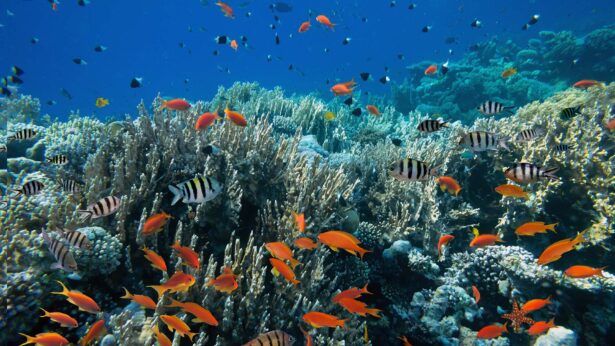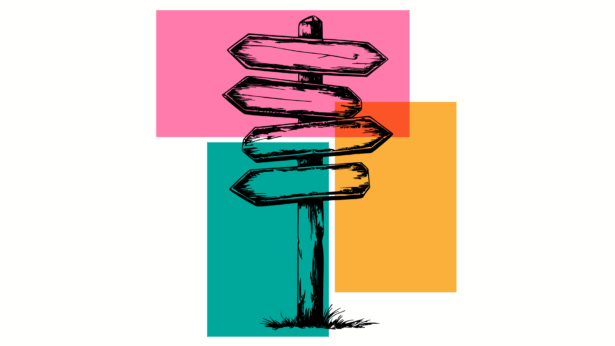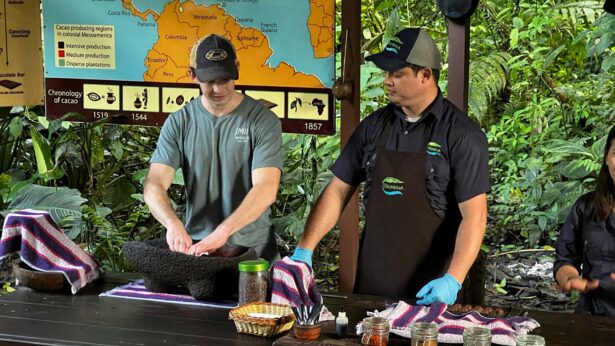Established in 1917, Our Tennessee is published four times a year (winter, spring, summer and fall) and distributed to alumni donors. The UT System Division of Communications and Marketing publishes the magazine on behalf of the UT Alumni Association.
Mission Statement
Our Tennessee is produced with the goal of publishing a magazine that UT alumni, donors, parents, faculty, staff and anyone who happens upon a copy would enjoy reading.
Our Tennessee informs and entertains, focusing on the interests of the reader while subtly reminding its audience of the successes of the University and alumni of every UT campus and institute.
The magazine contents support the University’s three-fold mission:
- Educate: The magazine publishes interesting stories that go beyond a mere announcement of news to a discussion of issues and topics covered through the experiences and expertise of UT alumni, faculty and staff.
- Discover: The reader discovers something he or she didn’t already know such as a noteworthy statistic, a delightful insight or quirky tale.
- Connect: Learning about UT and its people connects alumni and donors to university, grows their sense of pride and increases the value of a UT degree.
Editorial
- Contents of the magazine are determined by the executive editor with input from the UT Alumni Association, UT Foundation and communication leadership for each campus and institute.
- The magazine’s editorial style is distinctive and varies slightly from the editorial style for UT System written communication, overall. Writers should reference point No. 10 below.
- The magazine is divided into departments and the feature well. Departments include:
- News & Updates: a page of briefs on System, Knoxville,Chattanooga, Southern, Martin, Health Science Center, Institute of Agriculture and Institute for Public Service happenings;
- President’s Desk: A topical letter from the UT system president;
- Editor’s Note and Letters to the Editor: Description of the issue’s topic theme, and reader correspondence;
- Alumni Association: News and stories from the UT Foundation.
- The Last Word: First-person essay on various topics written by a UT alumni, a member of faculty/staff or a student. The magazine does not publish notices of deaths, honors, promotions, weddings or births of children, which may be included in campus alumni publications.
- Generally, each issue includes four to six feature stories of varying from 500 to 1,000 words or more. Features are determined by varied interest or topic theme and some connection to the University, such as a UT program, alumnus/alumni, faculty or staff and, overall, a compelling read.
- The executive editor makes assignments for stories and photography and reserves the right to hire freelance writers and photographers. Expectations for assignments will be discussed in advance. Freelance contributors are paid upon receipt of the article or photos, and fee is determined prior to completion of the assignment.
- The editorial staff will reject copy if it is inappropriate, poorly written, not delivered on schedule or not in keeping with this editorial policy or the overall messaging of the University.
- Writers and photographers may be asked to submit published samples of previous work before Our Tennessee contracts with them.
- Writers asked to submit a piece for The Last Word should refrain from espousing political and religious views. Personal insights are welcome, but the editorial staff can ask for an essay to be rewritten or revised if its contents are deemed inappropriate, inaccurate or misleading.
- All copy is checked with the source(s) prior to publication. Writers should submit copy to the managing editor prior to approval by the source unless another arrangement has been made.
- Our Tennessee copy style – Writers should use Associated Press style when preparing articles for the Our Tennessee, with the following exceptions:
- Titles of books, magazines (including Our Tennessee), movies and TV shows are italicized. The word ‘university’ is not capitalized on second reference, and words like ‘state’ in state of Tennessee are not capitalized. Alumni are identified by their campuses and graduation years in this manner: John Doe (Knoxville ’10).
- Alumni with more than one degree (put first degree first): John Doe (Knoxville ’10, ’13). Alumni with more than one degree from multiple campuses: John Doe (Chattanooga ’09, HSC ’13). Campuses are listed for alumni IDs as Knoxville, Martin, Southern, Chattanooga and Health Science Center. UT Space Institute graduates are listed as Knoxville, but copy should note the specific campus as UT Space Institute. Knoxville graduates who earned degrees through Institute of Agriculture departments should be listed in parentheses as Knoxville but UTIA included in the article.
- Names of campuses and institutes within articles appear as follows (first reference, second reference):
- UT Knoxville then UTK
- UT Chattanooga then UTC
- UT Southern then UTS
- UT Martin then UTM
- UT Health Science Center then UTHSC
- Institute for Public Service then IPS
- Institute of Agriculture then UTIA
- UT Space Institute then UTSI
- University of Tennessee System and UT System
- Titles of books, magazines (including Our Tennessee), movies and TV shows are italicized. The word ‘university’ is not capitalized on second reference, and words like ‘state’ in state of Tennessee are not capitalized. Alumni are identified by their campuses and graduation years in this manner: John Doe (Knoxville ’10).
- It is important that those who interview, write and make photographs for Our Tennessee are courteous representatives of the magazine and the university.
- The Our Tennessee staff edits copy as needed. If major changes are made, the writer can review the revised copy. Our Tennessee staff determines the illustration and placement of articles and the headlines and other typographical elements.
- Maximum length of features is negotiable depending on space available and subject matter. Length is determined by the editorial staff, who reserve the right to cut articles as needed.
- Bylines are usually given to writers and credits given to photographers for features and all departments except News and Updates.
- Complimentary issues of the magazine are sent to writers and photographers whose work is included in that issue. More copies usually are available upon request.
- Letters to the editor are welcome. The name of the letter’s author must be included with the letter and will be printed in the magazine. The editor reserves the right to edit for style, spelling and grammar and to cut for length if necessary. Letters should be no longer than 350 words.
- Payment for freelance writers is determined in advance of story assignment and based on word count, subject matter, amount of time needed to conduct interviews and write story, number of people to interview and amount of needed research. Mileage may be paid according to university policies.
Approval and Production Process
- List of contents/assignments for each issue are approved by vice president for communications and marketing.
- Writers furnish complete articles to the executive editor on or before copy deadline, who edits the article for style, length and readability, then either returns it to the writer to send to the source if needed, to confirm and check for accuracy.
- The designer and executive editor makes final selections of images for publication. The designer or freelance photographer completes any necessary photo editing, cropping or formatting for print or online publication prior to images being used for design. The executive editor, working with photographers, compiles photo captions and photo credits information that is made available along with photos for design.
- The magazine’s executive editor reviews all stories for style and readability. Upon review by the executive editor, all content is conveyed to the copy editor, who edits for style and readability.
- After content has been reviewed by the copy editor, it moves on to the design phase. If a story’s subject matter is sensitive nature or of great significance, it may be sent to other administrators for approval prior to the production process.
- Once a proof of the entire magazine is complete, it is routed by the executive editor for internal review by appropriate administrators.
- The executive editor ensures that all final corrections and changes are made before a PDF of the design files are sent to the printer.
Printing and Mailing
Our Tennessee is printed by a non-university vendor selected by a competitive bid process. By contract, the printer also is required to mail the magazine. During the editing and design phases, there are certain deadlines associated with printing the magazine. About four weeks before the magazine is due to the printer, an email to the UT Foundation is sent to request the most up-to-date list of mailing addresses be sent to the printer. The deadline for furnishing the mailing list to the printer is at least of two weeks prior to the date the magazine is to go to press. An email detailing the criteria for the mail list is used to request the mailing list for every issue. Foundation staff send the mailing list to the printer and provide the executive editor the total quantity of mailing addresses. The executive editor adds the number of addresses to the distribution list for each campus communications office and others who receive the magazine in bulk, then sends that distribution list to the printer. The printer sends an invoice for printing after the magazine is mailed. It is important to remain in contact with the printer to ensure understanding of the printing schedule. Printer deadlines must be met.
Staff
Executive Editor: Ultimately responsible for all content and processes related to the magazine; oversees editorial, ensures deadlines are met.
Designer/Art Director: Collaborates with editorial and photographic staff on design and appearance of magazine, completes page design and preps files for printer.
Copy Editor: Edits individual articles and a proof of the magazine.
Advertising Manager: Sells ads, secures ad artwork for the magazine.
Business Manager: Conducts transactions on behalf of the magazine, including payment to freelancers and vendors, and billing and processing revenue from advertisers.
Web Designer: Posts content to the website and maintains overall look of the site.
Student Intern: Supports research needs, social media, writes articles and learns about production process.


